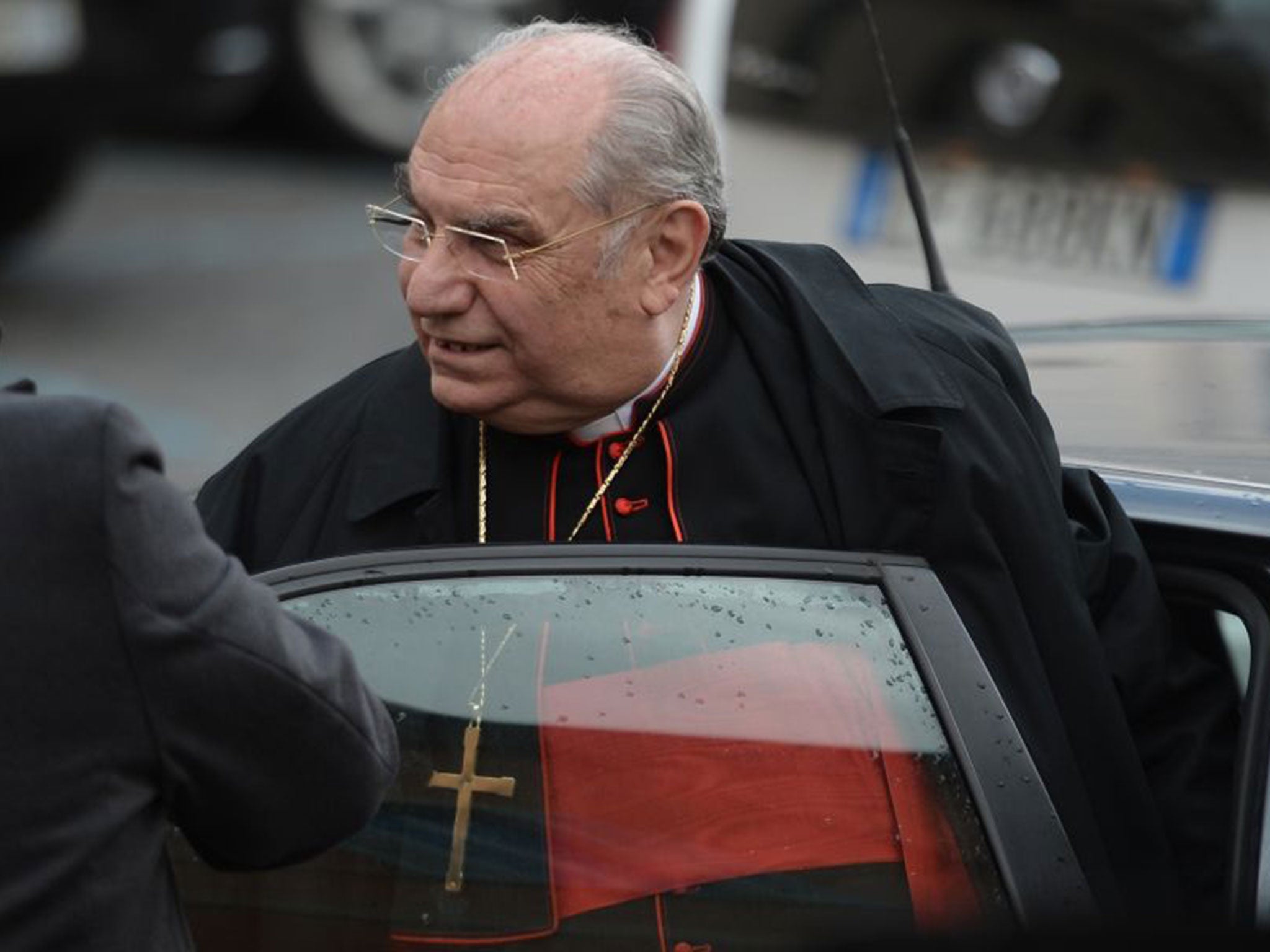Catholic bishop takes stand against Mafia by refusing to confirm mob boss' son
Murdered priest Padre Pino Puglisi is buried in Palermo cathedral where boy was set to be confirmed

It’s long been accused of adopting an at best ambiguous role in the fight against organised crime in Sicily, but the Catholic Church has now taken a symbolic stand against the Mafia in its Palermo heartland by refusing to give sacrament to the son of a notorious Cosa Nostra crime lord.
Despite protests from the boy’s family, Cardinal Paolo Romeo, the Archbishop of Palermo, banned the confirmation of the 17-year-old son of jailed killer Giuseppe Graviano in the city’s famous Norman cathedral at the weekend.
The 17-year-old was due to be confirmed along with 49 other students of a private Jesuit school in Palermo cathedral on Saturday. But the Archbishop ruled that the mobster’s son would have to receive the sacrament in a private ceremony, elsewhere.
His decision was particularly significant because the remains of Padre Pino Puglisi, the priest murdered by Graviano and his brother Filippo in 1993, lie in Palermo Cathedral itself. Cardinal Romeo noted that the Graviano family had never shown remorse for the killing of Puglisi, who had campaigned against the Mafia in Palermo’s poor Brancaccio neighbourhood.
The Graviano clan of Palermo is thought to remain one of the richest and most powerful in Cosa Nostra. In the last few years, authorities have seized from them assets worth €60m.
Cardinal Romeo said: “It was the only sensible thing to do. Of course children don’t bear the sins of their fathers. But you have to remember that the Cathedral is the place where Padre Puglisi is buried,” he said. “And we’ve never had any messages of contrition from these people over Padre Puglisi, the first martyr of the Church killed by the Mafia.”
But the Cardinal couldn’t have expected his stance would create new controversy – and accusations of prejudice. Maurizio Artale, the president of the foundation set up in the memory of Puglisi, who has since been beatified, hit out at the decision to ban the confirmation of the mob boss's relative.
“This is not the welcoming church preached by Pope Francis,” said Mr Artale. “We need to have the courage to say that this young man has been discriminated against.”
Mr Artale noted that Puglisi had never denied communion to young people forced to steal by their fathers. He said that Graviano’s son should have been allowed a normal confirmation with all his schoolmates in another church.
The boy’s mother also complained, and insisted - to no avail - that her son be confirmed with the rest of his schoolmates, according to the Palermo edition of La Repubblica newspaper.
Francesco Michele Stabile, a church historian and the president of the commission that promoted the beatification of Puglisi, backed the Cardinal, however. He said that it was necessary to send a “signal” to the Graviano family and the rest of society. “The decision of the curia is not an act of discrimination but a symbol of resistance to the Mafia,” he said.
Local observers suggest the Cardinal’s tough stance was prompted by criticism that erupted last September when the curia allowed the niece of Matteo Messina Denaro, the most senior Cosa Nostra figure still at large, to be married in the exquisite Palentine Chapel in Palermo’s Palazzo Reale.
The murky relationship between the Church and the mafia had been underlined in July when a Catholic parade in Calabria appeared to honour a local crime boss.
Marchers carrying a statue of the Virgin Mary in the town of Oppido Mamertina, stopped for a minute outside the home of the local ‘Ndrangheta boss, Peppe Mazzaggati, seemingly as a mark of respect.
This prompted a Carabinieri marshall to leave the procession in protest. But Monsignor Salvatore Nunnari, the president of the Calabrian bishops’ organisation, said he was "concerned that the priests did not have the courage to leave the procession".
Monsignor Antonino Raspanti, the Bishop of Acireale in Sicily, said at the time, that “in certain areas, mafia infiltration of religious parades continues to be endemic”.
Recently the upper echelons of the Church have taken a tougher line against the mafia, with Pope Francis declaring last summer: "Those who in their lives follow this path of evil, as mafiosi do, are not in communion with God. They are excommunicated.”
This led to around 200 ‘Ndrangheta convicts in Larino prison refusing to attend mass in the jail’s chapel, claiming that if they were excommunicated, there was no point in going to church. Mafia expert and author Roberto Saviano said the “strike” showed how effective the Pope’s declaration of excommunication had been.
But in the past the Vatican itself has been tarred by inappropriate links with mobsters. In 1982 when the Banco Ambrosiano, in which the Vatican was a major shareholder, collapsed, reports suggested that the institution had laundered Mafia money. The Bank’s chairman Roberto Calvi, known as God's Banker, was found hanging from Blackfriars Bridge in London, after, it is claimed, he made off with mobsters’ money.
And more recently, the notorious Rome crime boss Enrico De Pedis was entombed alongside former popes and cardinals in the capital’s Basilica of St Apollinare, after his murder in 1990. Some reports suggest the Vatican accepted a payment of one billion lire (£400,000) from the mobster’s family in order to bestow the honour on De Pedis.
Subscribe to Independent Premium to bookmark this article
Want to bookmark your favourite articles and stories to read or reference later? Start your Independent Premium subscription today.

Join our commenting forum
Join thought-provoking conversations, follow other Independent readers and see their replies